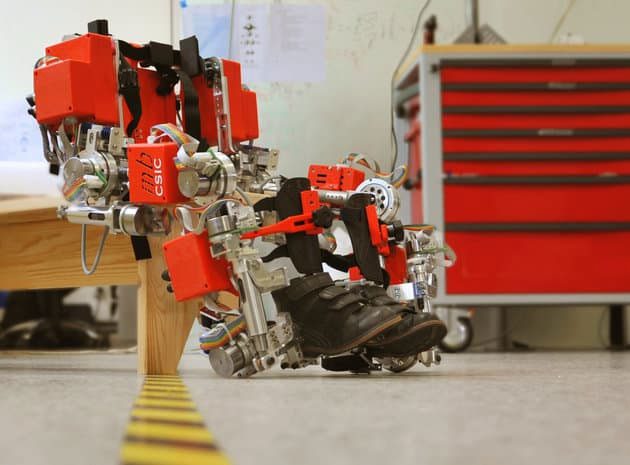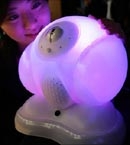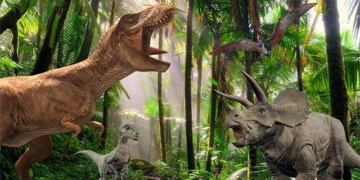With a happy smile, 8-year-old David Zabala, who has cerebral palsy, took his first steps at a physical therapy facility in Mexico City, Mexico. This achievement was made possible thanks to the robotic exoskeleton named Atlas 2030.
Due to his condition, David had been reliant on a wheelchair for a long time. He is hearing impaired and communicates using sign language. However, after donning the Atlas 2030, he was able to walk, stand in front of a mirror, hold a pencil, and draw his first lines. His mother, Guadalupe Cardoso, could not contain her emotions as she witnessed this memorable moment.

“Robot exoskeleton named Atlas 2030.” (Photo: exoskeletonreport.com).
Designed by Spanish professor Elena Garcia Armada, Atlas 2030 aims to help children who rely on wheelchairs to walk during their muscle rehabilitation process. This innovative device earned Professor Garcia Armada the European Inventor Award in 2022.
This 14 kg device features 8 joints and is specifically designed for children aged 3 to 14, assisting in the alignment of their hips, knees, and ankles. It is secured to the lower part of the child’s body using straps. An additional frame is attached to ensure the safety of young users and provide them with a sense of autonomy while walking. Doctors can easily interact directly with the patients without having to hold them.
According to the European Patent Office, the mechanical joints of this battery-powered titanium suit intelligently adapt to the movements of each child. The agency emphasizes that giving children with paralysis the opportunity to walk not only extends their lifespan and improves their physical health but also boosts their confidence.
Mexico is the third country, after Spain and France, to incorporate Atlas 2030 into physical therapy methods for children with paralysis. Guadalupe Maldonado, head of the Mexican Cerebral Palsy Patient Association, stated that the Atlas 2030 has significantly improved the rehabilitation process for children in a much shorter time compared to traditional therapies, which can take months to achieve similar results.
According to Maldonado, Atlas 2030 enhances the muscular strength of children, improves their digestive and respiratory systems, and notably uplifts their mood. The Mexican Cerebral Palsy Patient Association has observed positive outcomes from the Atlas 2030 just two weeks after acquiring their first exoskeleton. Maldonado emphasized that the association’s initial goal is to support rehabilitation for approximately 200 children with cerebral palsy and aims to extend assistance to patients throughout Mexico. The cost of the Atlas 2030 is around $250,000.




















































